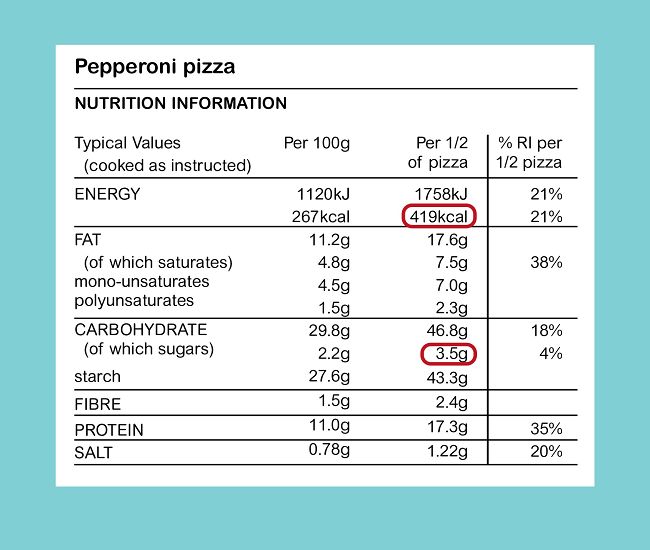A GUIDE TO SUGARS IN YOUR DIET
When you’re walking around the supermarket it can be confusing trying to decide what to buy as part of a healthy, balanced diet. Many foods and drinks have different labels, front and back of pack, containing lots of information and can be difficult to understand.
To help you, we’ve taken a closer look at the labels of everyday kitchen favourites. We’ve included a calorie breakdown and some facts you may find surprising.
An average man needs 2,500 calories a day while for a woman it’s 2,000 calories. (53) The Reference Intake for total sugars as part of your diet is 90g a day for adults. This Reference Intake is based on the requirements for an average female with no special dietary requirements and an assumed energy intake of 2,000 calories. (44)
The references to the calorie percentages in this guide have been worked out based on the Reference Intake Guidelines of 2,000 calories a day and 90g of total sugars a day.
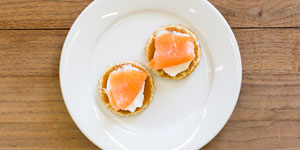
Smoked salmon (56g) and reduced fat soft cheese (30g) on two mini blini (17g) pancakes
Most of the sugars in this popular party canapé come from the naturally occurring lactose in the milk and cream used to make the soft cheese and blini pancakes, along with a pinch of sugar added to help the blinis rise and to add flavour to the salmon.
Learn more

Smoked salmon (56g) and reduced fat soft cheese (30g) on two mini blini (17g) pancakes
As you can see from the label opposite, there are 23 calories per blini, meaning that two blini pancakes contain 46 calories (2% of the Reference Intake (RI) for calories) and 0.6g of sugars (less than 1% of the RI for sugars).
For the ‘light’/reduced fat soft cheese, you can see from the second label that 30g (around two teaspoons) equates to 45 calories (2% of the Reference Intake for calories) and 1.5g of sugars (2% of the Reference Intake for sugars).
From the third label (based on 100g of smoked salmon), you can see that an average portion (56g) of smoked salmon contains 88 calories (4% of the Reference Intake for calories) and trace amounts of sugar.
In total, two of these bite-sized party morsels contain 179 calories (9% of the Reference Intake (RI) for calories) and 2.1g of sugars (2% of the RI for sugars).
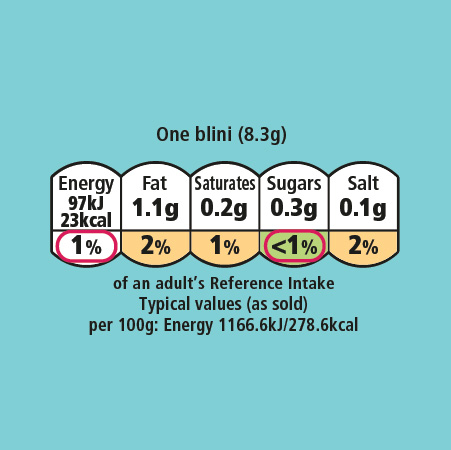
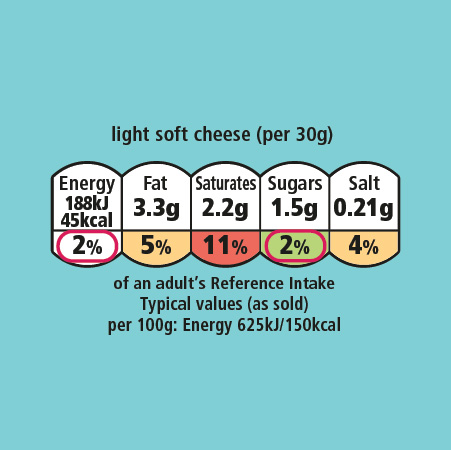
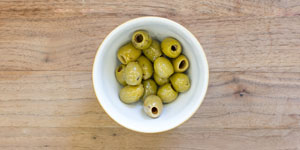
Fifteen (average portion) green pitted olives (15g)
You may be surprised to know that these green pitted olives only contain tiny amounts of sugars, which come naturally from the olives themselves.
Learn more

Fifteen (average portion) green pitted olives (15g)
From this label you can see that 15g of green pitted olives (around 15 small olives) contains less than 0.1g of sugars, which is less than 1% of the Reference Intake (RI) for sugars. They also contain 21 calories, which is just 1% of the RI for calories.
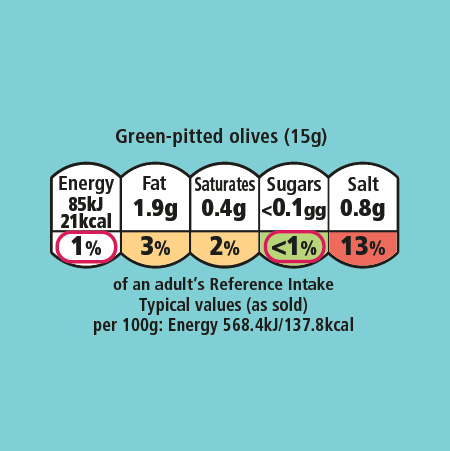

Three cheese straws (25g)
The low level of sugars in these cheese straws come from the naturally occurring lactose found in the gouda and edam cheese ingredients, along with tiny amounts in the seed toppings.
Learn more

Three cheese straws (25g)
This label shows that one cheese straw (8.3g) contains 47 calories, meaning that three straws contain 141 calories (7% of the Reference Intake (RI) for calories), but only 0.3g of sugars (less than 1% of the RI for sugars).
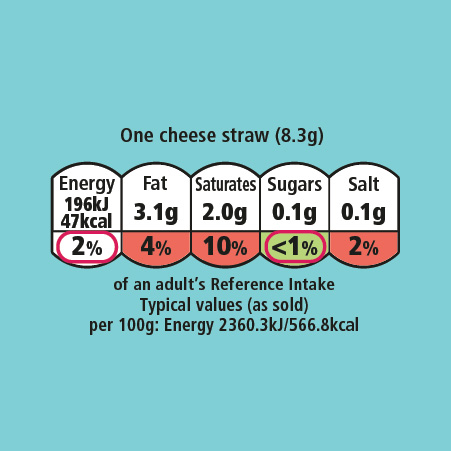
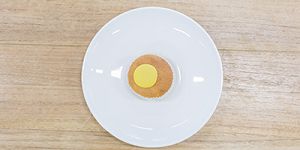
Iced fairy cake (22g)
Most of the sugars found in this fairy cake come from the sugars used to make the sponge base. The rest are in the icing glaze for sweetness and to decorate the cakes.
Learn more

Iced fairy cake (22g)
From this label we can see that one iced fairy cake contains 7.9g of sugars, which is 9% of the Reference Intake (RI) for sugars. It also contains 100 calories, which is 5% of the RI for calories.
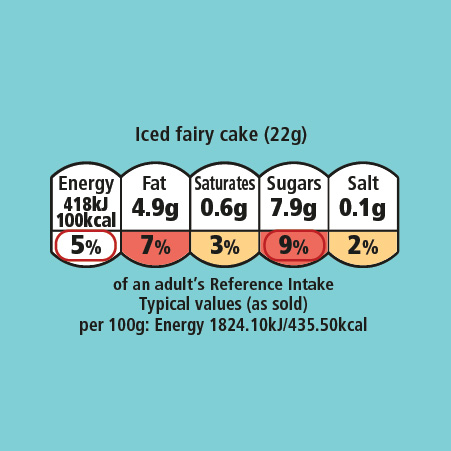
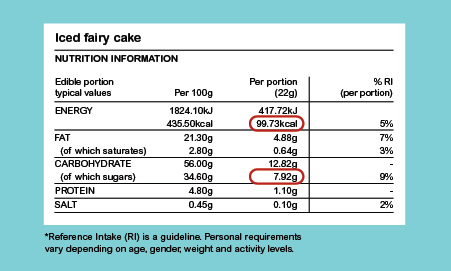
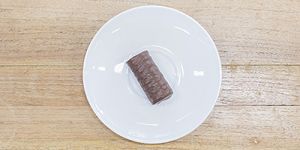
Chocolate mini roll (26g)
Most of the sugars in a chocolate mini roll come from the sugars added in the milk chocolate coating and buttercream icing, and the ingredients used to make the sponge roll.
Learn more

Chocolate mini roll (26g)
In one chocolate mini roll there are 117 calories, which is 6% of the Reference Intake (RI) for calories. It also contains 11g of sugars, which is 12% of the RI for sugars.
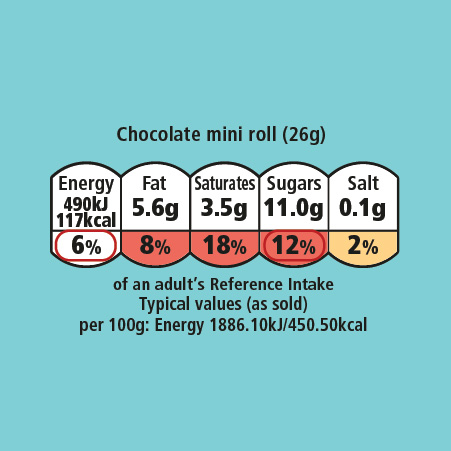
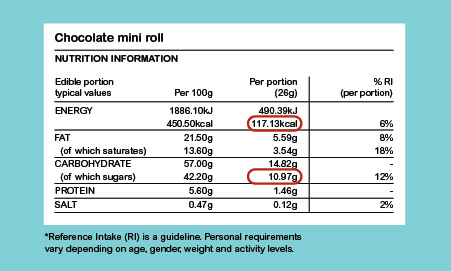
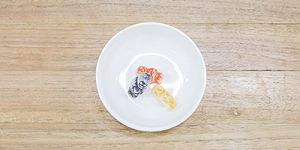
Jelly babies (3 sweets (18g))
Almost all of the sugars in these jelly babies are added for sweetness. A tiny percentage (0.8%) of naturally occurring sugars also comes from the citrus and berry fruit juice ingredients for flavour.
Learn more

Jelly babies (3 sweets (18g))
If you enjoy a treat, you can see from this label that three jelly babies totals 62 calories (3% of the Reference Intake (RI) for calories) and 13.6g of sugars (15% of the RI for sugars).
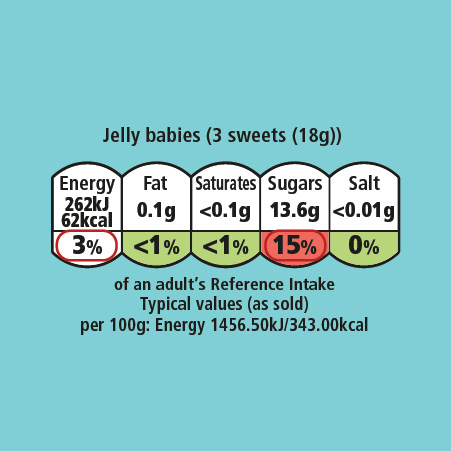
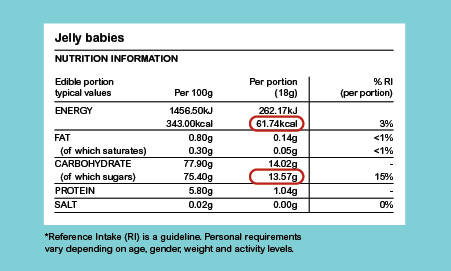
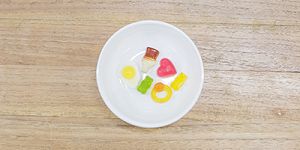
Jelly sweets (21g (1/4 of a bag))
Most of the sugars in jelly sweets come from syrups and sugars added for sweetness and flavour. A small amount of naturally occurring sugars also come from the fruit juice and plant concentrates ingredients.
Learn more

Jelly sweets (21g (1/4 of a bag))
One-quarter of a bag of jelly sweets contains 70 calories (4% of the Reference Intake (RI) for calories), and 9.4g of sugars (10% of the RI for sugars).
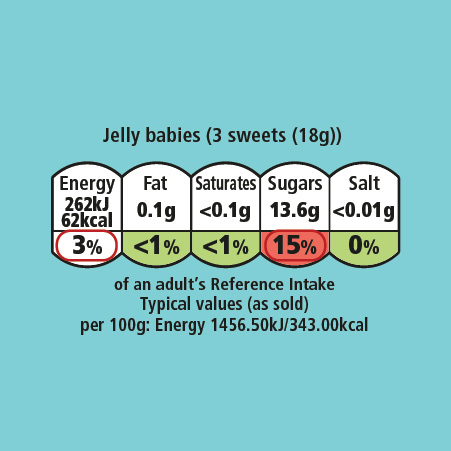
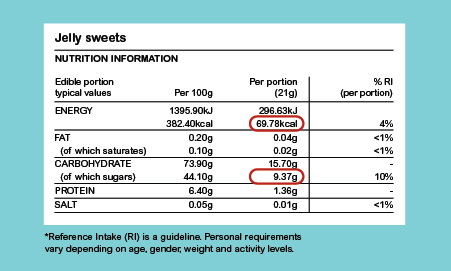
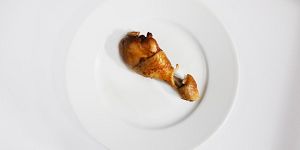
One cooked chicken drumstick
Did you know, like most meats chicken does not contain a high amount of sugars?
Learn more

One cooked chicken drumstick
One drumstick makes up 8% of the Reference Intake (RI) for calories, and less than 1% of the Reference Intake for sugars.
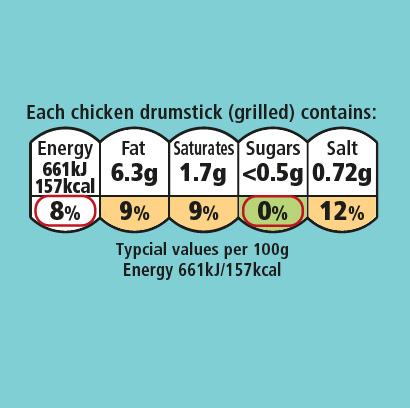
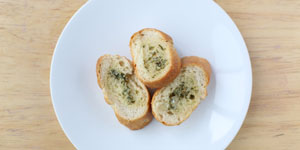
Slice of garlic bread (29g)
The low level of sugars here come from the garlic, buttermilk and concentrated lemon juice used to make the garlic bread.
Learn more

Slice of garlic bread (29g)
As you can see from the label opposite, a slice of garlic bread contains 92 calories (5% of the Reference Intake (RI) for calories) and less than 1g of sugars (1% of the Reference Intake for sugars).

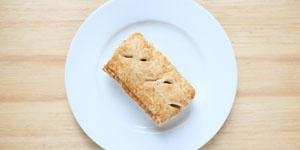
One sausage roll (60g)
The sugars in this sausage roll come from the onion powder used to season the sausage meat.
Learn more

One sausage roll (60g)
If you’re snacking on a sausage roll this summer, take a look at the label first.
This label shows us that one sausage roll (60g) contains202 calories and only 0.2g of sugars.
This makes up 10% of the Reference Intake (RI) for calories, and less than 1% of the Reference Intake for sugars.
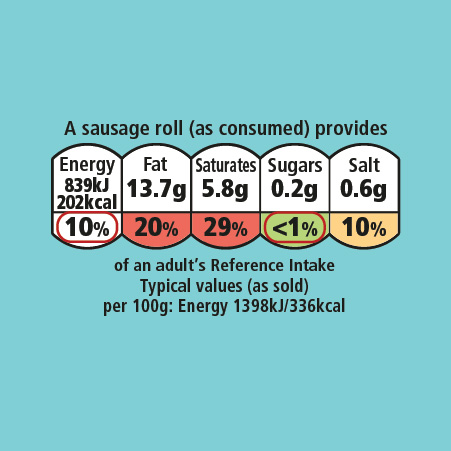
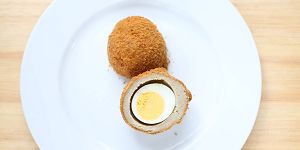
One scotch egg (113g)
The sugars in this scotch egg come from the onions used to season the sausagemeat, and the glucose used for flavour.
Learn more

One scotch egg (113g)
A popular picnic snack, this label shows us that one of these scotch eggs contains 245 calories and 1.4g of sugars.
This makes up 12% of the Reference Intake (RI) for calories, and 2% of the Reference Intake for sugars.
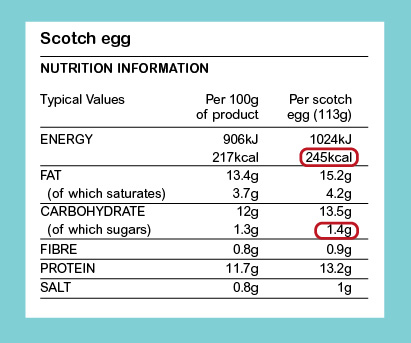
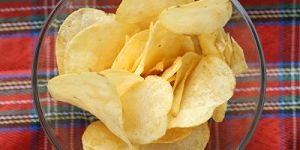
Packet of cheese and onion crisps (32.5g)
The cheese and onion flavouring provides the main source of sugars in a packet of these crisps.
Learn more

Packet of cheese and onion crisps (32.5g)
A closer look at the label shows that this packet of crisps contains 169 calories (8% of the Reference Intake (RI) for calories) and 0.8g of sugars (less than 1% of the Reference Intake for sugars).
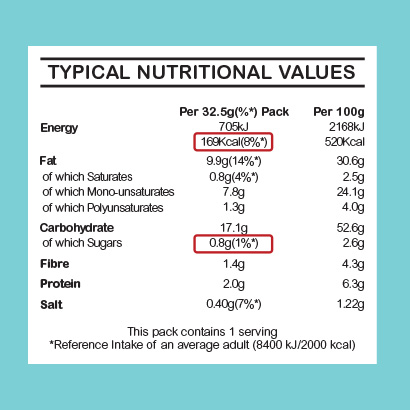
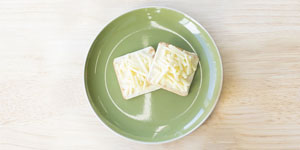
Two cream crackers and cheese (30g)
Did you know that there are less than 0.5g of sugars in the grated Cheddar cheese?
Learn more

Two cream crackers and cheese (30g)
As you can see from the label opposite, there are 35 calories per cracker, meaning that two crackers contain 70 calories (4% of the Reference Intake (RI) for calories) and less than 1g of sugars (less than 1% of the Reference Intake for sugars).
For the grated Cheddar cheese, you can see from the second label that 30g equates to 117 calories (6% of the Reference Intake for calories) and less than 0.5g of sugars (less than 1% of the Reference Intake for sugars).
You can see from the third label (based on 100g of butter) that 10g of butter would contain 70.6 calories (4% of the Reference Intake for calories) and 0.06g of sugars (less than 1% of the Reference Intake for sugars).
In total, the snack contains 257.6 calories (14% of the Reference Intake for calories) and 1.56g of sugars (less than 3% of the Reference Intake for sugars).
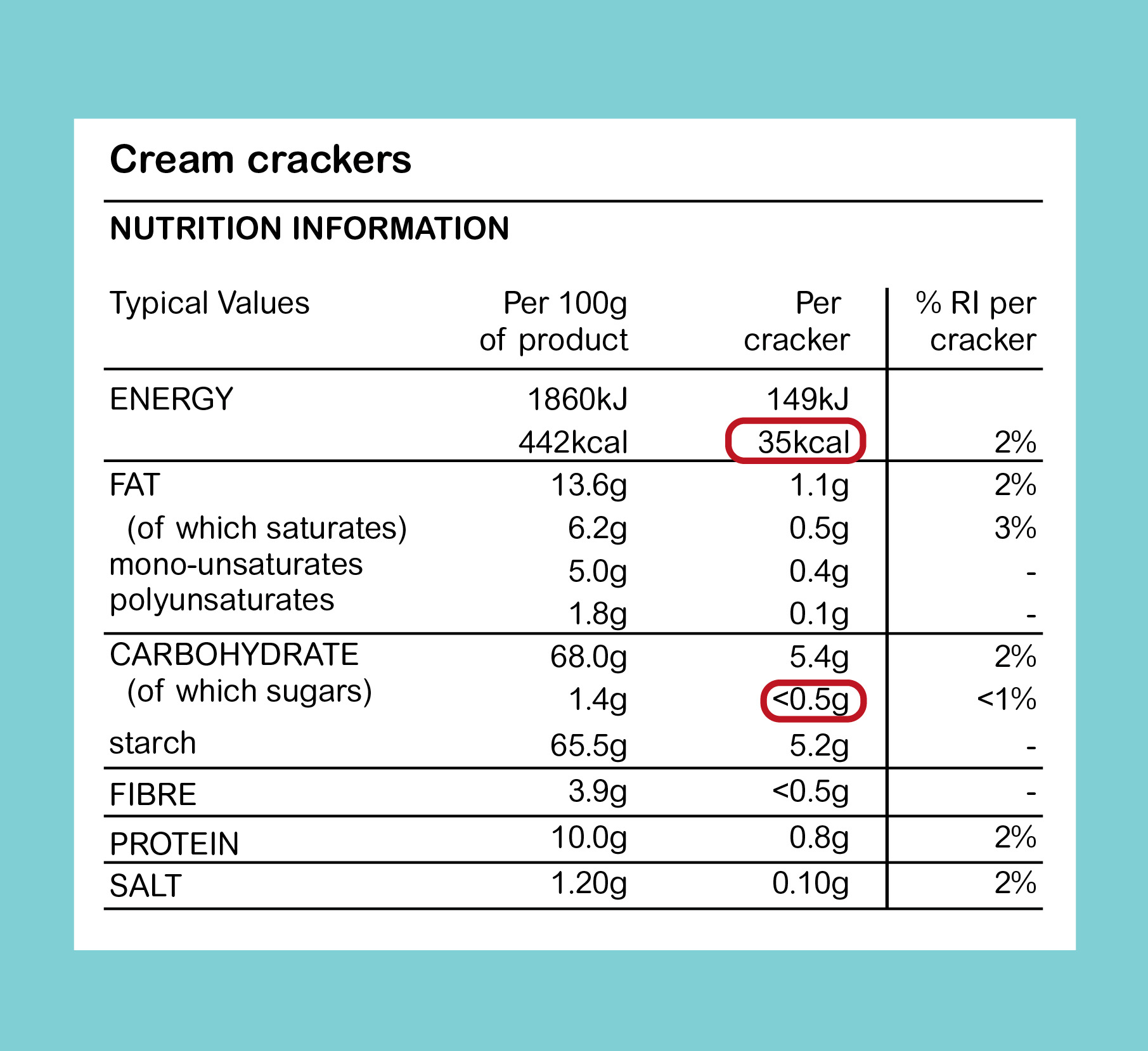


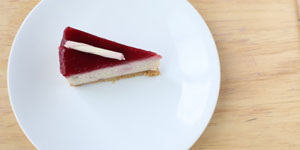
Slice of strawberry cheesecake
For one slice of this cheesecake, a large proportion of the sugars come from the naturally occurring sugars in the strawberries. Some sugars come from the lactose found in the milk from the cow used to make the topping, and there are also added sugars provided for taste and texture.
Learn more

Slice of strawberry cheesecake
One slice (or a sixth) of this strawberry cheesecake contains 419 calories (25% of the Reference Intake (RI) for calories) and 3.5g of sugars (4% of the Reference Intake for sugars).
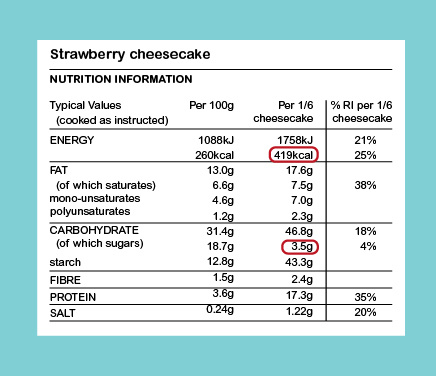

Portion of vanilla ice cream dessert (100g)
Did you know that the majority of the sugars in this ice cream dessert come from the added sugars used to make the ice cream? Some of the sugars also come from lactose found in the milk from the cow.
Learn more

Portion of vanilla ice cream dessert (100g)
A 100g portion of vanilla ice cream dessert contains 250 calories (12.5% of the Reference Intake (RI) for calories) and 21g of sugars (23% of the Reference Intake for sugars).
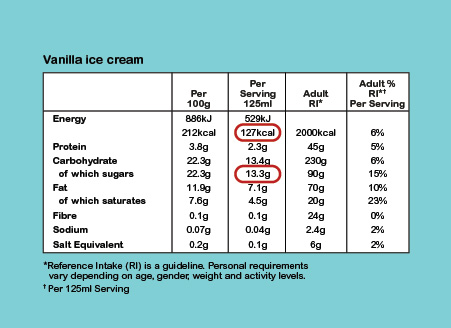
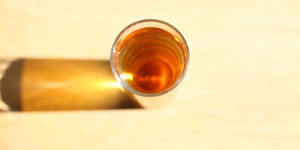
Glass of apple juice from concentrate (200ml)
This apple juice is made only with the juice from apples, so all of the sugars present are naturally occuring.
Learn more

Glass of apple juice from concentrate (200ml)
From this label you can see that one glass of this apple juice (200ml) contains 89 calories and 20.7g of sugars. This makes up 5% of the Reference Intake (RI) for calories, and 23% of the Reference Intake for sugars.
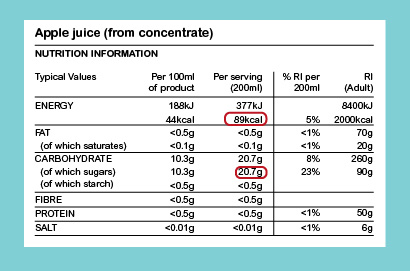
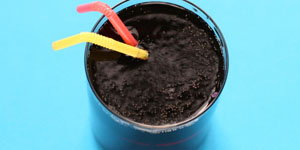
Can of cola (330ml)
Did you know that this can of cola contains 39% of your recommended daily total sugars intake?
Learn more

Can of cola (330ml)
This can of cola will provide 139 calories or 7% of the Reference Intake (RI) for calories and 35g of sugars or 39% of the RI for sugars.
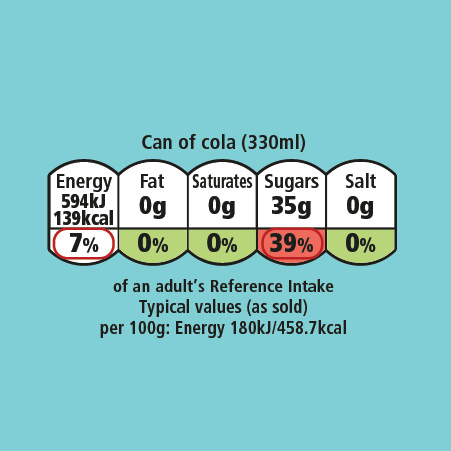
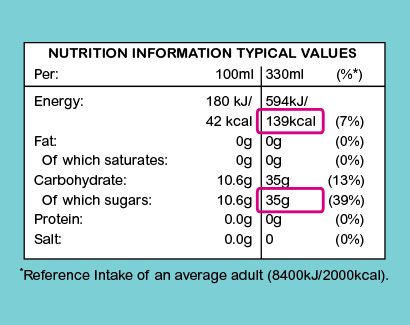
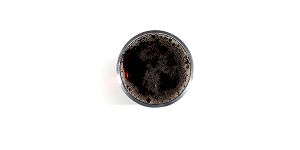
Glass of whiskey and coke (200ml)
The whiskey in this drink does not contain any sugars. All of the sugars and most of the calories come from the coke.
Learn more

Glass of whiskey and coke (200ml)
One serving of this whiskey and cola contains 161 calories and 27g of sugars.
This makes up 8% of the Reference Intake for calories.

Glass of vodka and cola – 275ml (25ml of vodka and 250ml cola)
The vodka in this drink does not contain any sugars. All of the sugars and 65% of the calories come from the cola.
Learn more

Glass of vodka and cola – 275ml (25ml of vodka and 250ml cola)
One serving of this vodka and cola (275ml) contains 161 calories and 27g of sugars.
This makes up 8% of the Reference Intake (RI) for calories, and 29% of the Reference Intake for sugars.

A handful of salted peanuts (25g)
Peanuts are high in fibre, a source of plant-based protein, and all of their sugars (sucrose) are naturally occurring from the legume itself.
Learn more

A handful of salted peanuts (25g)
From this label you can see that one serving of these salted peanuts (25g) makes up 8% of the Reference Intake (RI) for calories, and 1% of the RI for sugars.
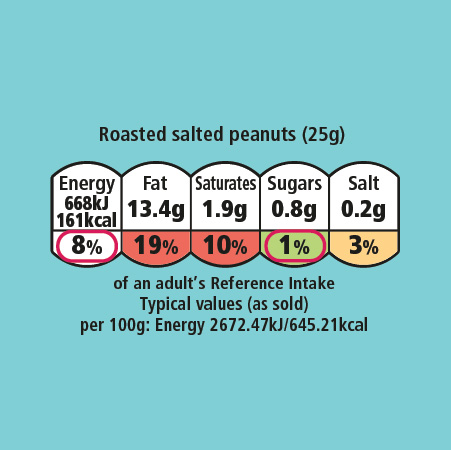
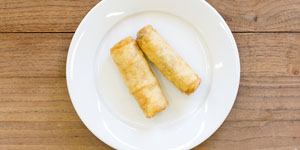
Two vegetable spring rolls (120g)
Most of the sugars in these vegetable spring rolls come from the naturally occurring sugars in the vegetables, with a small amount added during cooking for extra sweetness and flavour.
Learn more

Two vegetable spring rolls (120g)
This label shows that one vegetable spring roll contains 139 calories, and 2.9g of sugars. If you eat two of these spring rolls, that would make 278 calories (14% of the Reference Intake (RI) for calories), and 5.8g of sugars (6% of the RI for sugars).

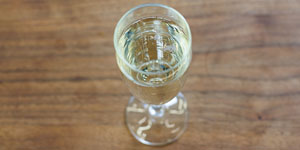
Glass of Prosecco (125ml)
Prosecco is a popular party drink, but did you know that some of the sugars are naturally occurring from the grape juice from which it is made. Typically a little is also added, along with yeast to encourage the production of carbon dioxide bubbles. This gives prosecco its characteristic fizz.
Learn more

Glass of Prosecco (125ml)
From this label we can see that one (125ml) glass of prosecco contains 1.5g of sugars (2% of the Reference Intake (RI) for sugars), and 98 calories – which is 5% of the RI for calories.
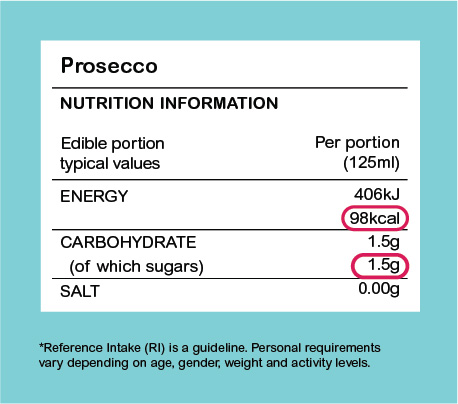

One serving of plain tortilla chips (30g)
Tortilla chips are made with maize, which contains a low level of sugars.
Learn more

One serving of plain tortilla chips (30g)
Next time you’re dipping into a bag of tortilla chips, check the label first.
From this label you can see that one serving of these plain tortilla chips (30g) makes up 1% of the Reference Intake (RI) for calories, and 2% of the Reference Intake for sugars.
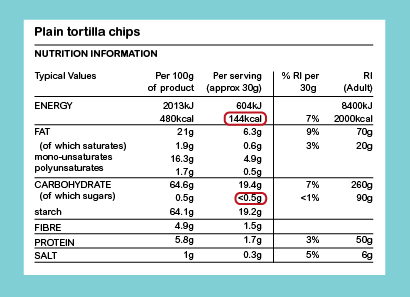

One serving of salsa dip (40g)
Most of the sugars in this salsa dip are from the tomatoes, with a small amount of sugar added to adjust the taste.
Learn more

One serving of salsa dip (40g)
This label shows us that one serving of this salsa dip (40g) makes up 1% of the Reference Intake (RI) for calories, and 2% of the Reference Intake for sugars.
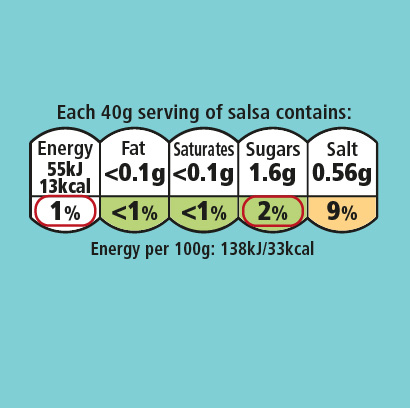
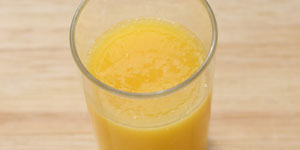
Glass of orange juice (200ml)
Typically the sugars in a 200ml glass come naturally from the oranges themselves.
Learn more

Glass of orange juice (200ml)
This label shows 5% of the Reference Intake (RI) for calories and 22% of the Reference Intake for sugars.
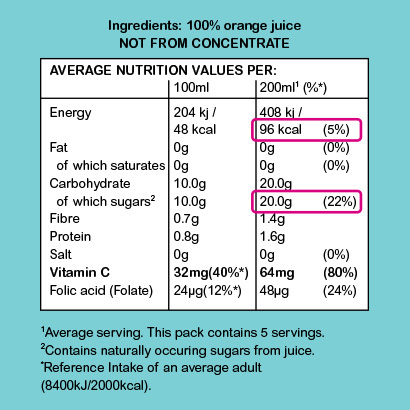
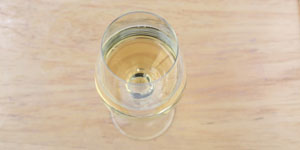
Medium glass of white wine (175ml)
If you want to settle down to a nice glass of white wine on a Saturday evening it may be useful to note that the sugar in white wine comes from the grapes.
Learn more

Medium glass of white wine (175ml)
A medium glass (175ml) of white wine contains 5g of sugars and 131 calories which is 7% of the Reference Intake (RI) for calories.
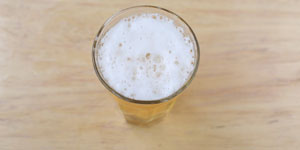
Bottle of beer (330ml)
Fancy a nice cool beer to wash down your dinner with. Well did you know that all of the sugars in beer are fermented into alcohol?
Learn more

Bottle of beer (330ml)
One 330ml bottle of beer contains 132 calories which is 7% of the Reference Intake (RI) for calories.
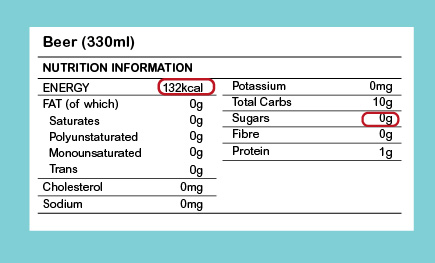
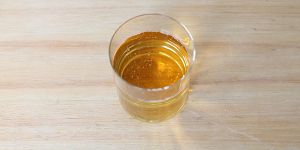
Dry cider – half a bottle (250ml)
Did you know that the sugars in cider are typically from the apples? The yeast used to make the cider coverts some of the sugars to alcohol and carbon dioxide, which gives this cider its fizz.
Learn more

Dry cider – half a bottle (250ml)
If you are sipping a chilled cider alongside your meal, this label shows that half a bottle (250ml) is 105 calories and contains 5.5g of sugars. That is 6% of the Reference Intake (RI) for calories and 8% of the Reference Intake for sugars.
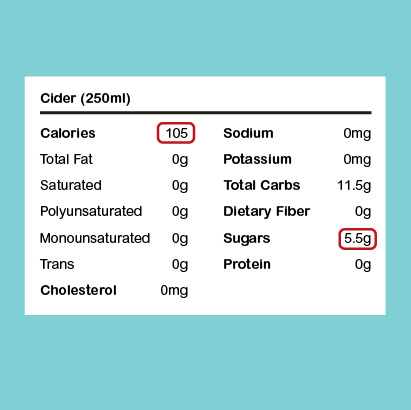
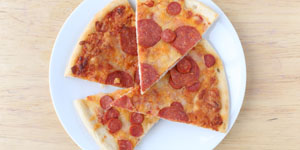
Half a pepperoni pizza
The majority of the sugars in this pepperoni pizza come from the tomatoes in the sauce.
Learn more

Half a pepperoni pizza
Half a pepperoni pizza contains 419 calories (21% of the Reference Intake (RI) for calories) and 3.5g of sugars (4%of the Reference Intake for sugars).
